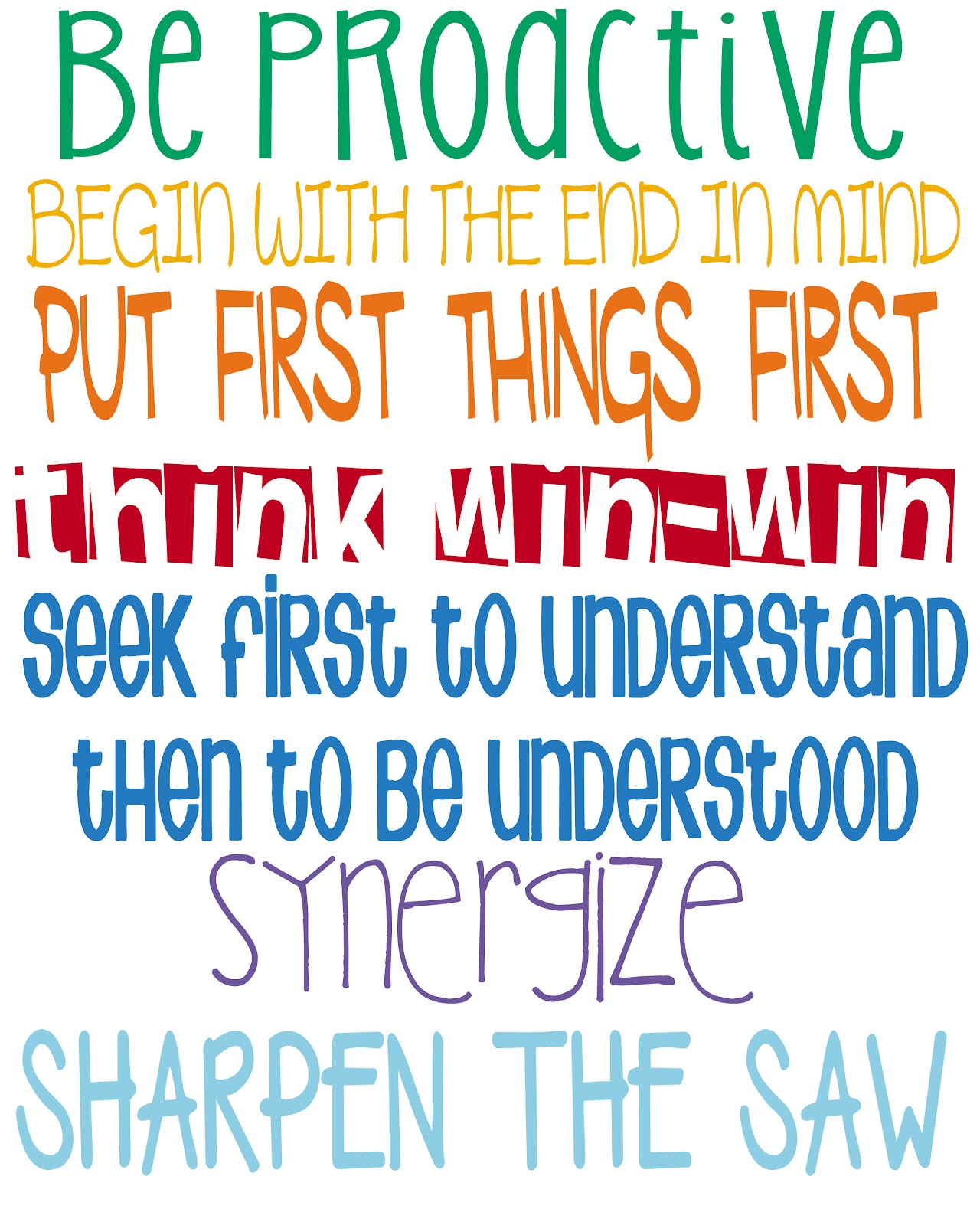


Talk about the equation: 1 + 1 = 3 (or more).

It’s not your way or my way, but a better way. Synergize is when two or more people work together to create a better solution that either would have thought of alone. Simply put, we have two ears and one mouth so that we can spend more time listening with the intent to understand. Learning to listen without interrupting and learning to listen with your ears, your eyes, and your heart will help children build a foundation for Habit 5. This habit is best approached by introducing listening as a skill that should be practiced. Young children find it difficult to understand another’s paradigm (point of view). Teaching Habit 5 to young children is done by first considering their age and development. By taking the time to listen to another person, you reach a higher level of communication. Seek First to Understand, Then to Be Understood means that it is better to listen first and talk second. Habit 5: Seek First To Understand, Then To Be Understood As a parent, not everything is negotiable, but if you go into discussions with your child with a win-win mindset, you’ll find a lot less resistance. Think Win-Win is being happy for others when good things happen to them. It is a belief that there are enough good things for everyone it is an abundant way of thinking. Think Win-Win is the belief that everyone can win. Modeling this behavior is one of the best ways to teach children. By writing down his or her responsibilities and planning ahead, last-minute trips to the store, missed events, or missed homework are avoided. When your child uses a planner at school, then he or she has a great organizational tool to Put First Things First in writing. Learning to think of which things are the most important and taking care of them first allows children (and adults) to be less stressed. Thinking about what needs to be done tomorrow or by the end of the week can be overwhelming, especially for children. Put First Things First means to decide what is most important and to take care of that first. Before doing a puzzle, they look at the cover of the box. For young children, a good example is that of a jigsaw puzzle. Reading a recipe before cooking or looking at a map before leaving on a trip is beginning with the end in mind. Discussions can focus on taking care of themselves, taking care of their things, reacting or not reacting to others’ behavior, planning ahead, and thinking about what the right thing to do is.īegin With the End in Mind means to think about how you would like something to turn out before you get started. The goal is to teach them to think about those results before they decide what to do. I am in the driver’s seat.” Young children can easily learn to understand that different choices yield different results. I can choose how I react to other people or situations. I am responsible for whether I am happy or sad. Be Proactive says, “I am in charge of my own life. Habit 1 is the key to all of the other habits that’s why it comes first. The leadership principles and lessons are not taught as a curriculum, but instead are incorporated into coursework, traditions, systems, and culture.īe Proactive means to take responsibility for your choices and behaviors. The Leader in Me differs from other whole-school transformation processes in that it offers a holistic, schoolwide experience for staff, students, and parents, and creates a common language and culture within the school. The 7 Habits of Highly Effective People is also a key component of the overall Leader in Me process and is a synthesis of universal, timeless principles of personal, interpersonal, and organizational effectiveness such as responsibility, vision, integrity, teamwork, collaboration, and renewal, which are secular in nature and common to all people and cultures. The process includes student participation in goal setting, data tracking, leadership roles throughout the school organization, Student-Led Conferences, leadership environments and Leadership Events. The program is based on The 7 Habits of Highly Effective People by Steven Covey. The program teaches students, educators, staff and parents 21st century leadership and life skills and creates a culture of student empowerment based on the idea that every child can be a leader. The Leader in Me is a whole-school program aiming to transform the school community into a community of leaders.


 0 kommentar(er)
0 kommentar(er)
